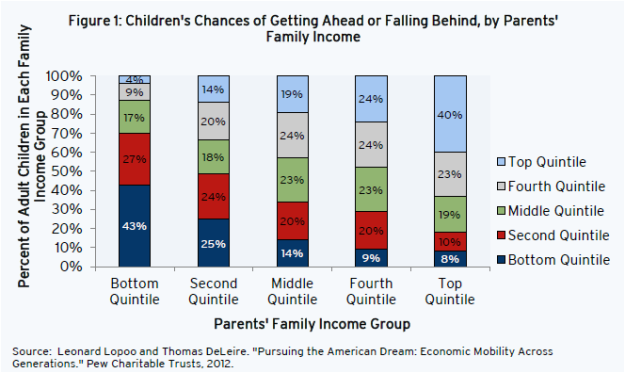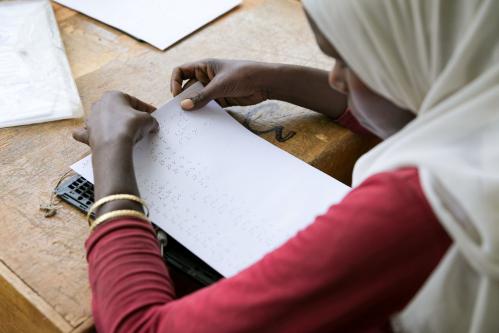The goal of improving opportunity and lifting rates of social mobility is shared across the U.S. political spectrum. Everyone is in favor of mobility, but how will we know if we’re getting more of it – and who will tell us? Here are three ideas taken from my new paper, Planning the American Dream: The Case for an Office of Opportunity.
1. Institutionalize the Commitment to Mobility with an Office of Opportunity
Improving social mobility rates is a long-term task, spanning many administrations and congresses. Giving mobility an institutional “home”—preferably in the form of an apolitical, bipartisan Office of Opportunity—should help maintain a commitment to the mobility cause over the longer term. An Office of Opportunity could be created at a federal level: but equally, in a forward-looking state or city.
(There’s some international precedent here: the UK Government has created an independent, statutory Commission on Social Mobility and Child Poverty.)
2.
Select An Official Social Mobility Measure
There are countless ways to assess rates of mobility: absolute versus relative; by income, education, or occupation; between generations or within generations; using quintiles, percentiles…Anyway, you get the idea. It would be useful to have a broadly agreed metric. I propose a single, simple measure: the proportion of people moving from the bottom quintile of the income distribution as children, to one of the top two quintiles as an adult. This is a relative, income-based intergenerational measure which gets quite close, I think, to the moral intuition lying behind the political and public desire for greater social mobility: that people born on the bottom rung of the ladder should have a decent chance of getting towards the top. Right now, according to most analyses, that number is around 13% (while in a world of perfect mobility it would be 40%):

3.
Create a Dashboard of ‘Leading Indicators’ of Mobility
Of course it will take a long time to move the needle on intergenerational mobility: at least a generation in fact. But there are more immediate measures likely to predict mobility rates. For instance, closing the gap in school readiness at age 5 or narrowing the extraordinary differences by parents’ income in the chances of getting to a selective college, will almost automatically improve the chances of escaping from the bottom rung of the income ladder. The UK government has created a dashboard of such ‘leading indicators’ of mobility, which are updated annually. In the U.S., some possible leading indicators could be the income-based gaps on measures such as:

If we could narrow the gaps on each of these measures, it is almost certain that upward mobility rates would improve. But let’s wait to see what the Office of Opportunity says…
The Brookings Institution is committed to quality, independence, and impact.
We are supported by a diverse array of funders. In line with our values and policies, each Brookings publication represents the sole views of its author(s).



Commentary
An Office for Opportunity: Time for America to Get Serious about Social Mobility
May 29, 2014